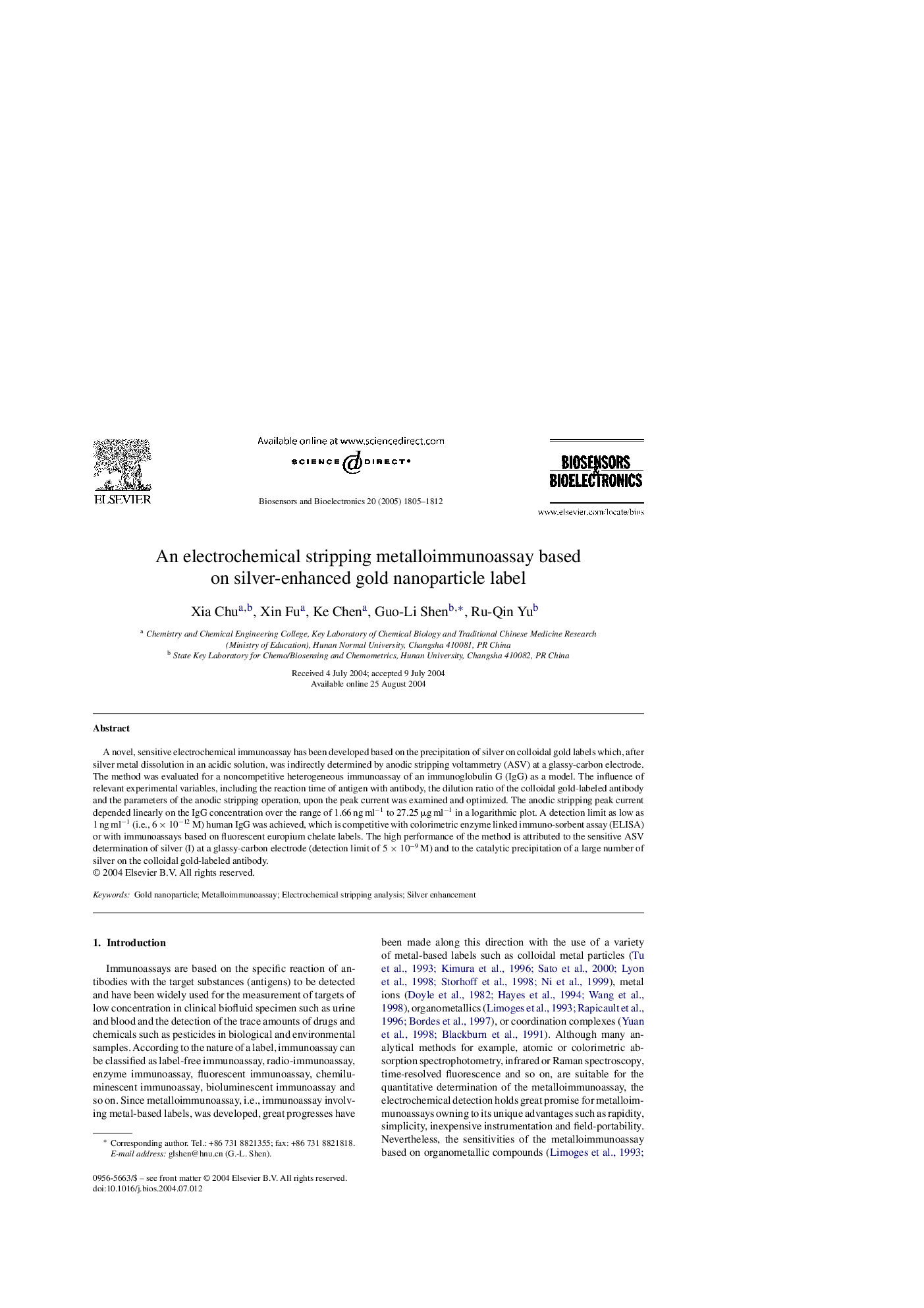| Article ID | Journal | Published Year | Pages | File Type |
|---|---|---|---|---|
| 10429785 | Biosensors and Bioelectronics | 2005 | 8 Pages |
Abstract
A novel, sensitive electrochemical immunoassay has been developed based on the precipitation of silver on colloidal gold labels which, after silver metal dissolution in an acidic solution, was indirectly determined by anodic stripping voltammetry (ASV) at a glassy-carbon electrode. The method was evaluated for a noncompetitive heterogeneous immunoassay of an immunoglobulin G (IgG) as a model. The influence of relevant experimental variables, including the reaction time of antigen with antibody, the dilution ratio of the colloidal gold-labeled antibody and the parameters of the anodic stripping operation, upon the peak current was examined and optimized. The anodic stripping peak current depended linearly on the IgG concentration over the range of 1.66 ng mlâ1 to 27.25 μg mlâ1 in a logarithmic plot. A detection limit as low as 1 ng mlâ1 (i.e., 6 à 10â12 M) human IgG was achieved, which is competitive with colorimetric enzyme linked immuno-sorbent assay (ELISA) or with immunoassays based on fluorescent europium chelate labels. The high performance of the method is attributed to the sensitive ASV determination of silver (I) at a glassy-carbon electrode (detection limit of 5 à 10â9 M) and to the catalytic precipitation of a large number of silver on the colloidal gold-labeled antibody.
Related Topics
Physical Sciences and Engineering
Chemistry
Analytical Chemistry
Authors
Xia Chu, Xin Fu, Ke Chen, Guo-Li Shen, Ru-Qin Yu,
